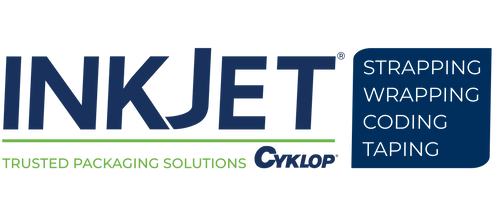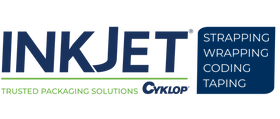How to Improve Throughput in Manufacturing on Any Line | In-line Improvements #4 | InkJet, Inc.
Whether a company is in the business of manufacturing pharmaceuticals, packaging food, bottling beverages, or developing personal care products, high throughput is a shared goal. After all, the quicker that production can finalize their goods, the greater output becomes and the more potential profit can be made.
This leads many companies to search for how to improve throughput in manufacturing by evaluating their workflows, identifying bottlenecks, and upgrading equipment. In many cases, industrial coding is a key space for improvement.
To finalize production on everything from aerospace parts to packaged consumer goods, manufacturers are required to label their goods with codes required by either supply chain partners or government authorities. Designed to create complete traceability and inform consumers, companies must place these barcodes, serial numbers, and best-by dates on their product packaging or else face the potential consequences of:
-
Lost inventory
-
Expensive and time-consuming recalls
-
Fines from both supply chain partners government agencies alike
-
Public reputation damages
-
Soured supply chain partnerships
To avoid these issues, companies must be meticulous in how they mark their products, making sure to both include the correct information on the labels and apply them properly. Although care is required for successful labeling, being careful does not have to be time-consuming when you have the right technology and workflows.
By following these best practices you can improve your labeling efficiency and increase overall throughput as a result.
1. Automate Product Labeling
When companies first begin having to label their products, hand-labeling is often the go-to choice. With no hardware investments and minimal training required, companies utilize hand-labeling to finalize products before shipping them down the supply chain. However, the more a company grows, the less feasible this approach becomes.
As company output becomes greater and more diverse, labels increase in volume and variety as well. Label applications that once took an hour to complete can take up entire shifts pulling workers away from other important tasks.
Further, as new SKUs cause label inventories to grow, the chance of mislabeling grows exponentially. Accidentally applying the wrong labels to a product is an easy mistake to make, and rectifying the problem can be extremely time-consuming and drag down overall output.
Fortunately, these issues can be solved quickly with the implementation of an automated labeler. Compact machines like thermal inkjet (TIJ) printers are intuitive, affordable, and can significantly accelerate the labeling process. Through the use of a TIJ printer like the Anser Pro-S or Anser X1, operations are able to:
-
Mark products with label information at speeds ranging from 300-600 meters per second (depending on the specific printer and required DPI resolution).
-
Completely digitize label inventories minimizing the risk of mislabeling and streamlining label selection.
Both of these steps significantly reduce the time and labor required to mark products, boosting overall throughput.
2. Avoid Downtime With Reliable Equipment and Regular Maintenance
For those who are already labeling their products with an industrial printer, the need for reliable equipment likely can’t be overstated. Whether you’re using a TIJ printer, a continuous inkjet printer, a high-resolution case coder, or a print-and-apply labeler, one hardware mishap can lead to hours of downtime which can destroy the day’s productivity.
Accordingly, when looking for how to improve throughput in manufacturing, eliminating downtime related to mechanical problems is one of the most important steps to take.
One can begin by making sure that all maintenance tasks are being performed on a regular basis. For those using zero-maintenance machines—such as thermal inkjet printers—this step is easy. Simply wipe the nozzle clean at the end of the day to avoid buildup and remove the cartridge if the machine won’t be used for a few days.
For other machines, there are more steps to take and a time-based professional inspection is a necessity.
Take CIJ printers, for example. When using a continuous inkjet printer like the DuraCode Touchscreen, it’s essential to change filters and inks on an ongoing basis to avoid hardware problems and prolonged downtime. Additionally, one must schedule six month regular maintenance for:
-
Part inspection and replacement
-
Full system cleaning to eliminate ink buildup
-
Diagnosis of potential future problems
Through regular system maintenance and daily care, one can maximize operational efficiency.
3. Streamline Quality Assurance With Defect Detection Systems
No matter how reliable a labeling system is, mistakes are inevitable. Codes can be applied incorrectly leading to readability errors and possible unscannability. Improper label placement could also occur due to disruptive workplace vibrations or other sporadic production line issues.
Fortunately, modern technology has made it easier than ever to identify defective labels and isolate any offending products from the larger supply. This is most effectively performed with the help of a Defect Detection System.
Using a combination of deep learning software, advanced cameras, and motion sensors, Defect Detection Systems are integrated into production lines to automatically detect potential issues with codes or anything else on product surfaces. If an issue is discovered, a device such as a swipe arm removes the product from the line so that it can be appropriately dealt with.
With the aid of a Defect Detection System, companies can minimize their coding mistakes, streamline the quality assurance process, and improve overall output.
Searching for How to Improve Throughput in Manufacturing? InkJet, Inc. Can Help
Throughput is a key consideration when looking to maximize company profitability. To improve it, one must take a reflective look into operational workflows, hardware, and overall expenses. Here, we have seen three ways in which a company can improve their daily operations to make labeling more efficient and boost productivity as a result. However, not every throughput-boosting method is right for everyone.
If you’re wondering how to improve throughput in manufacturing but are unsure of where to start, InkJet, Inc. has you covered. For over thirty years, our team has been helping clients optimize their operations for peak efficiency.
Contact us anytime online or call us today at 1(800) 280-3245 to learn how our services can benefit you.



